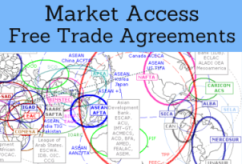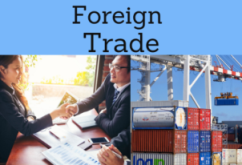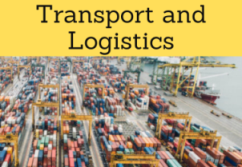Business in Uruguay, Montevideo, MERCOSUR
Uruguay: the political centre of South America (ALADI, MERCOSUR) Financial Services, Logistics

The Oriental Republic of Uruguay is the political and financial centre of South America
Uruguay is a gateway and the geographical centre of MERCOSUR (295 million people)
The Headquarters of MERCOSUR and the Latin American Integration Association (ALADI) are in Montevideo
Uruguay is the largest software exporter per capita in Hispanic America and third in absolute terms
Uruguay is eminently an agricultural export Economy
- Introduction to Uruguay (South America)
- Uruguayan Economy
- Doing Business in Montevideo
- Uruguayan International Trade
- Export and import formalities
- Investment in Uruguay
- Transport and Logistics
- Key Uruguayan Sectors:
- Industry
- Food products
- Information and communication technology
- Tourism
- Financial services
- Case Study:
- Eastern Forest
- Cristalpet
- Access to the Uruguayan Market
- Business Plan for Uruguay

The objectives of the subject “Foreign Trade, Logistics and Business in Uruguay” are:
- To analyze the Uruguayan Economy, Logistics and Global Trade
- To conduct research on business opportunities in Uruguay
- To explore the Uruguayan trade relations with the student's country
- To learn about Uruguayan Trade Agreements
- To examine the profile of Uruguayan companies
- To develop a business plan for the Uruguayan Market

The Subject “Foreign Trade, Logistics and Business in Uruguay” is included within the curriculum of the following academic programs at EENI Global Business School:
Masters: International Business, Foreign Trade.


Languages:  (or
(or  Uruguay
Uruguay  Uruguai
Uruguai  Uruguay).
Uruguay).
- Subject Credits “Doing Business in Uruguay”: 1

International Trade, Logistics and Business in Uruguay.

Uruguayan Preferential Access and Agreements.
- Uruguay and the Hispanic American Economic Area
- MERCOSUR
- MERCOSUR Trade Agreements: Andean Community, Mexico, Peru, Chile, India, Egypt, Israel, the EU, SACU
- Mexico-Uruguay Agreement
- Uruguay-Gulf Cooperation Council (GCC) Agreement
- Andean Community (associate member)
- Latin American Integration Association (ALADI)
- Union of South American Nations (UNASUR)
- Latin American and Caribbean Economic System
- Trade Negotiations Among Developing Countries
- Global System of Trade Preferences among Developing Countries (GSTP) - accession process
- SICA (observer country)


- World Trade Organization (WTO)
- Agreement on Sanitary and Phytosanitary Measures
- Agreement on Trade in Services (GATS)
- Agreement on Technical Barriers to Trade
- Agreement on Preshipment Inspection
- Agreement on Safeguards
- Trade Facilitation Agreement
- World Customs Organization (WCO)
- Kyoto Convention
- TIR Convention (Road Transport, IRU)

- Economic Commission for Latin America (ECLAC)
- East Asia-Latin America Cooperation
- Summit South American-Arab Countries
- Inter-American Development Bank
- Organization of American States (OAS)
- Africa-South America Summit
- Community of Latin American and Caribbean States (CELAC)

- United Nations
- World Bank
- International Monetary Fund
- CPLP (observer country)
The Oriental Republic of Uruguay
- Uruguay has a long political and economic stability
- According to “The Economist,” Uruguay is considered as the most democratic Hispanic American Economy
- Uruguay has an established a political party system and is the first country in Hispanic America, along with Chile, with the less Corruption Perceptions Index (“Transparency International”)
- According to the UN Development Programme, Uruguay is the third country in Hispanic America (after Argentina and Chile), with the highest Human Development Index; 98% of the Uruguayan population has access to drinking water and electricity
- Borders of Uruguay: Brazil and Argentina
- Uruguayan Population: 3.3 million people
- Area of Uruguay: 176,215 km²
- Capital of Uruguay: Montevideo
- Uruguayan currency is the peso (UYU)
- The official language of Uruguay is Spanish
- Uruguay is administratively divided into nineteen departments
- Abolition of Slavery in Uruguay: 1842
- African Diaspora in Uruguay: 0.1 million people (4% of the Uruguayan population)
The main religion in Uruguay is Christianity (2.3 million Catholics).
Uruguay belongs to the Hispanic American Economic Area of Western Civilization.
Uruguayan Economy
- The economic activity has augmented considerably within a context marked by the inflation under control and public sector accounts in line with the objectives of the Government of Uruguay
- The Uruguayan services sector (financial, logistics and transport, and communications) has grown considerably in recent years
- We must emphasize the significant information technology (IT) growth, including the software development and related services
- Manufacturing growth (opening of a pulp mill)
- Uruguayan currency: Peso (UYU). Flexible exchange rate
Montevideo, the capital of Uruguay, is geographically the main Maritime cargo route of MERCOSUR, the integration axis with Argentina, Brazil, and Paraguay to be within the influence area of almost 200 million people, with the highest GDP per capita in Hispanic America.

International Trade of Uruguay.
- The largest Uruguayan export product is soy (67 million dollars), accounting for 21% of exports from Uruguay
- The Oriental Republic of Uruguay has diversified its exports destination
- Main Uruguayan export destinations are the Free Zone of Nueva Palmira, Brazil (15%), Russia (7%), and Argentina (7%)
- Brazil is the second-largest export destination, the main exported products barley malt (17.6%) and whole milk powder (11.5%)
- Uruguayan private sector has grown at a sustained speed
International Trade and Business in Uruguay:

Uruguayan Free Zones.
- promotion and development of free zones to Foreign Direct Investment encouragement, exports, employment, and international economic integration have been declared of national interest by law
- There are now free zones in Colonia, Nueva Palmira, Montevideo, Florida, Rivera, Black River, New Helvetia, and Freedom
(c) EENI Global Business School (1995-2025)
Top of this page









 WhatsApp
WhatsApp